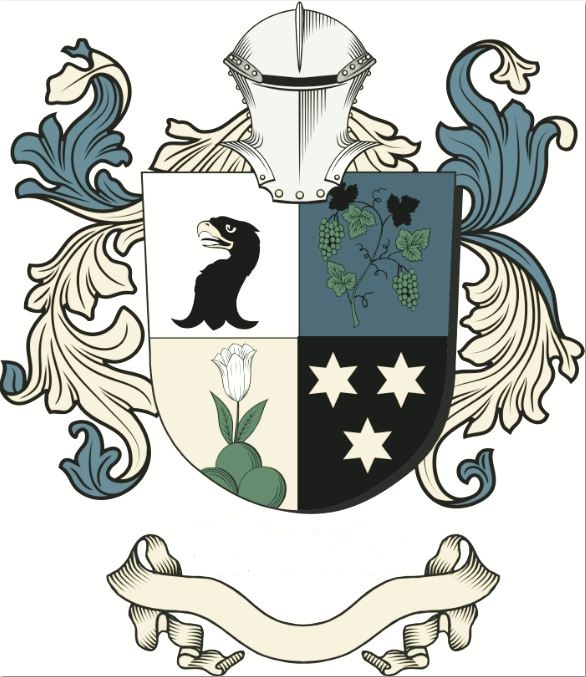Rosicrucian Society ™
Fama Fraternitatis and Rosenkreuz
The Fama Fraternitatis Rosae Crucis (Fama fraternitatis Roseae Crucis oder Die Bruderschaft des Ordens der Rosenkreuzer), or simply theFama Fraternitatis, is an anonymousRosicrucian manifesto published in 1614[1] inKassel (Germany). It was translated intoEnglish in 1652 byThomas Vaughan. It was published as an appendix of the 77th. Advertisement (section) intitled Generale Riforma dell' Universo (The Universal Reformation of Mankind) of a German translation of Bocallini's satira Ragguagli di Parnasso (Advertisements from Parnassus). The Fama which created a profound effect was soon published in separate form. The LegendTheFama tells the story of the "Father C.R." (later on C.R.C., the mythical AlchemistChristian Rosenkreuz), his ill-fated pilgrimage toJerusalem; his subsequent tutelage by the secret sages of the east, the wise men ofDamcar inArabia, from whom he learned the ancientesoteric knowledge which included the study ofphysics,mathematics,magic andkabbalah; his return throughEgypt andFes and his presence among thealumbrados in Spain. It is thought inoccultism that Rosenkreuz's pilgrimage seems to refer to transmutation steps of theGreat Work. After his arrival toGermany, Father C.R. and other Brothers established anesoteric Christian Fraternity: "The Fraternity of the Rose Cross". The Brothers of the Fraternity were sent in mission throughout the world, having as their first priority to use theirknowledge to "cure the sick" in a free of charge way "that gratis", not wearing any special clothing, and met once each year in the mysterious "House of the Holy Spirit". The Legend shows an agreement with six articles that they drew up Prior to their separation, bounding themselves one to another to keep:
List of names in the LegendThe Legend presented in the Manifestos has been interpreted through centuries as texts full of symbolism. Rosicrucians clearly adopted through the Manifestos thePythagorean tradition of envisioning objects and ideas in terms of their numeric aspects, and, on the other hand, they directly state in theConfessio Fraternitatis, "We speak unto you by parables, but would willingly bring you to the right, simple, easy and ingenuous exposition, understanding, declaration, and knowledge of all secrets." In the narrative
The sentence "C.R.C.'s deceased father's brother's son" has always been a deeply enigmatic one. There is the possibility that it may refer to therebirth process, a central tenet teaching of groups having, or claiming to have, a Rosicrucian philosophy. This would imply that "Father C.R.", possibly of the 13th/14th century, would have been reborn to "R.C.", becoming the 14th/15th century C.R.C. in the Manifestos. This appears to confirm what several later sources wrote about the Rosicrucian movement:
In C.R.C.'s vault
"Secundi Circuli"
The enigmatic "Fra. F.R.C." in the vault (the "R.C." in the narrative,see above) is mentioned as "heir"; this statement "younger heir of the house of the holy spirit" seems to provide evidence of the intimate relation to "Father C.R.", possibly meaning "Father R.C." [forming the C.R.C. initials]:
According to Émile Dantinne (1884–1969), the origins of the Rosicrucians may have anIslamic connection. Rosenkreuz started his pilgrimage at the age of sixteen. This led him toArabia,Egypt, andMorocco, where he came into contact with sages of the East who revealed to him the "universal harmonic science." After learning Arabic philosophy inJerusalem, he was led to Damcar. This place remains a mystery—it did not becomeDamascus but is somewhere not too far from Jerusalem. Then he stopped briefly inEgypt. Soon afterwards, he embarked toFes, a center of philosophical and occult studies, such as the alchemy of Abu-Abdallah, Gabir ben Hayan, andImam Jafar al Sadiq, the astrology and magic of Ali-ash-Shabramallishi, and the esoteric science of Abdarrahman ben Abdallah al Iskari. However, Dantinne states that Rosenkreuz may have found his secrets amongst theBrethren of Purity, a society of philosophers that had formed inBasra (Iraq) sometime during the 900s. Their doctrine had its source in the study of the ancientGreek philosophers, but it became more neo-Pythagorean. They adopted thePythagorean tradition of envisioning objects and ideas in terms of their numeric aspects. Theirtheurgy andesoteric knowledge is expounded in an epistolary style in theEncyclopedia of the Brethren of Purity. The Brethren of Purity and theSufis were united in many points of doctrine. They both were mystical orders deriving fromQur'anic theology but supplantingdogma with a faith in the Divine Reality. There were many similarities between the Rosicrucian way as expressed in the manifestos and the way of life of the Brethren of Purity. Neither group wore special clothing, both practiced abstinence, they healed the sick, and they offered their teachings free of charge. Similarities also were evident in the doctrinal elements of theirtheurgy and the story of creation in terms ofemanationism. Notes and references
See also |

© Copyright Societas Rosicruciana.com , 2008-2020 All Rights
Reserved
Home Join Manifesto History Degrees Society Contact High Degrees Rose Croix Degrees Rosicrucian References Resources Masonic Rosicrucian Degrees History Hermetic Beliefs The Magus Temple of Rosy Cross Prosperity Contact Society Confessio Fama Text Societas Rosicruciana Rosicrucian Thought Force Character Audio Books